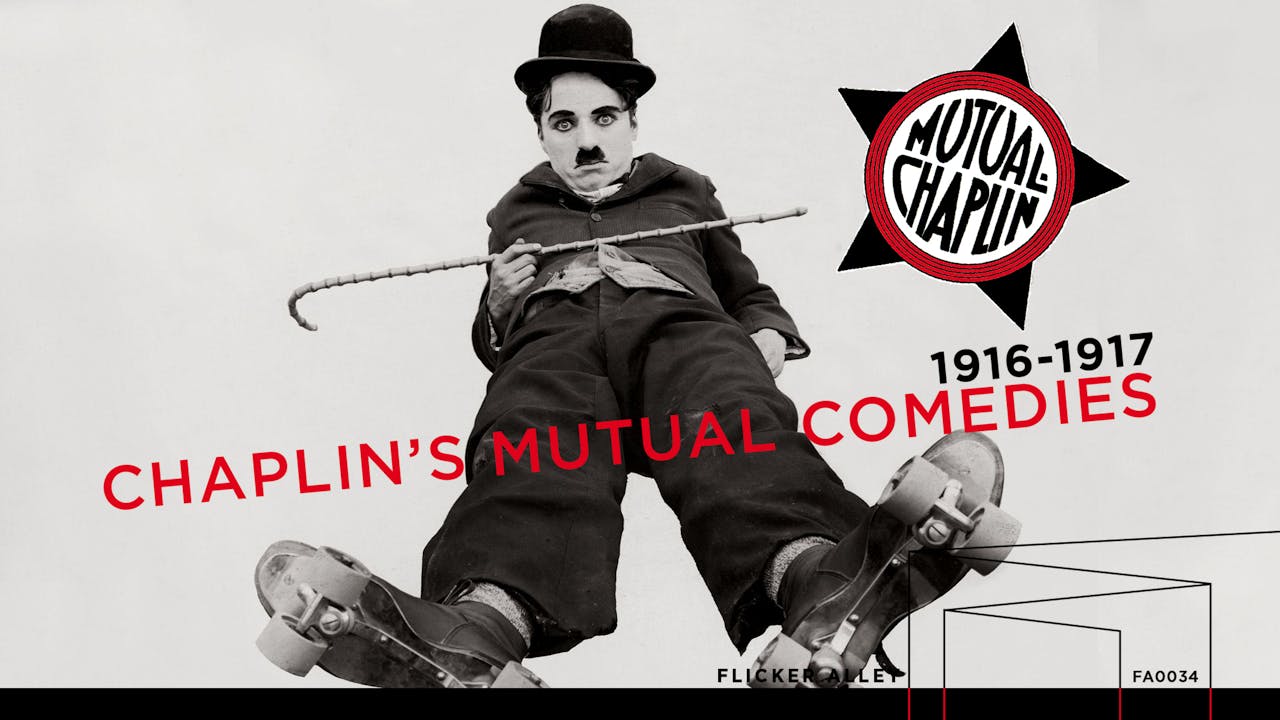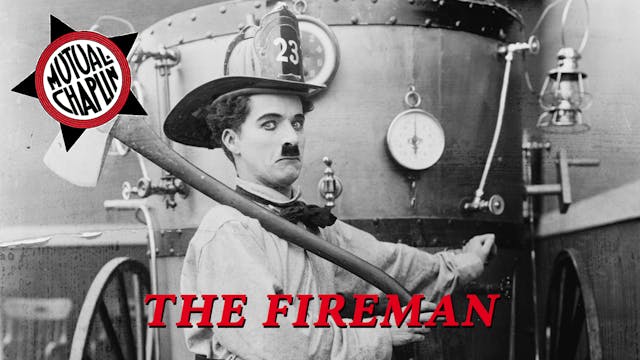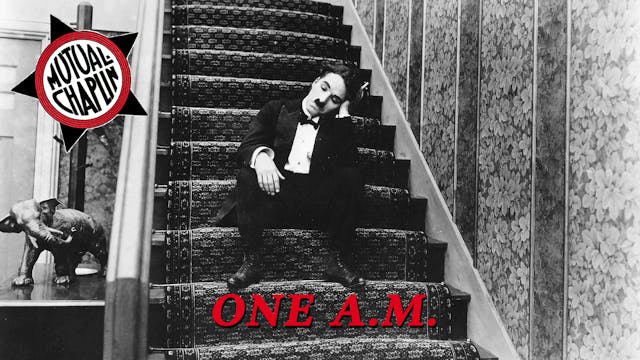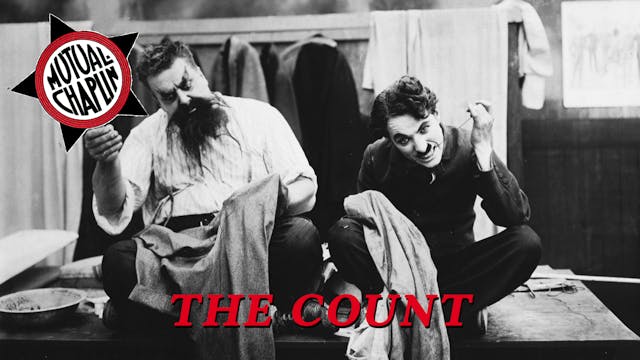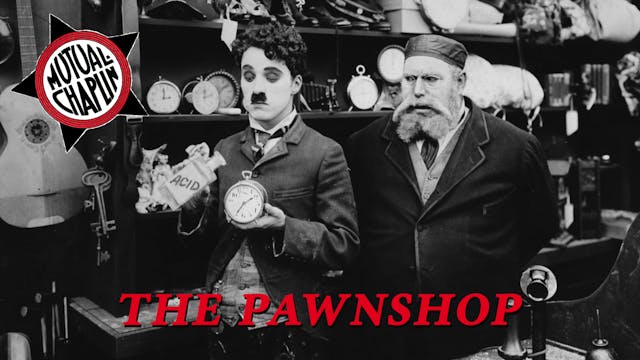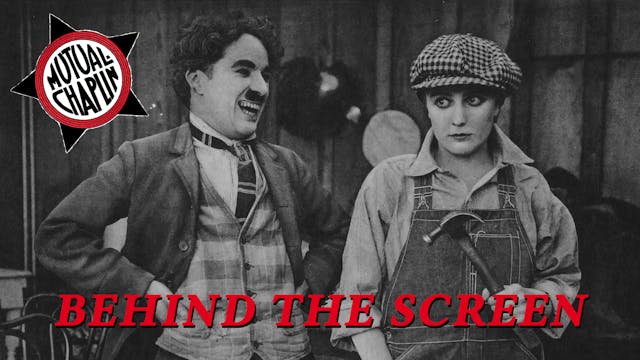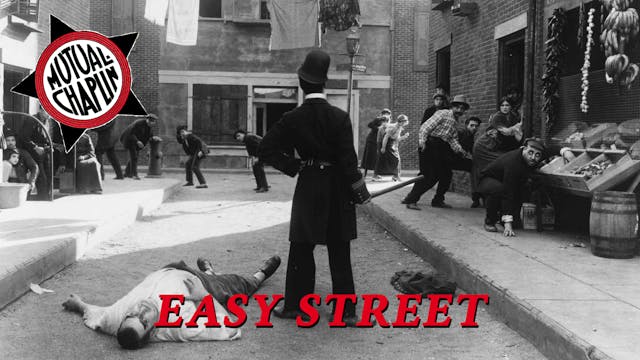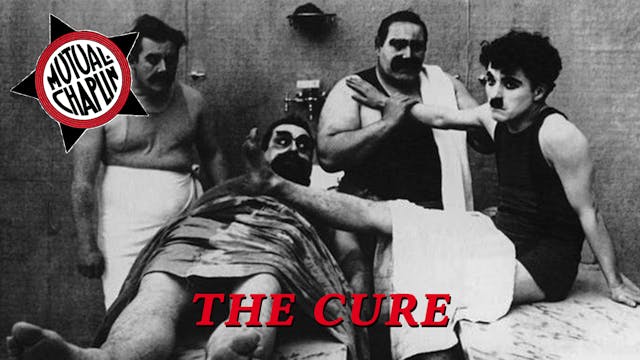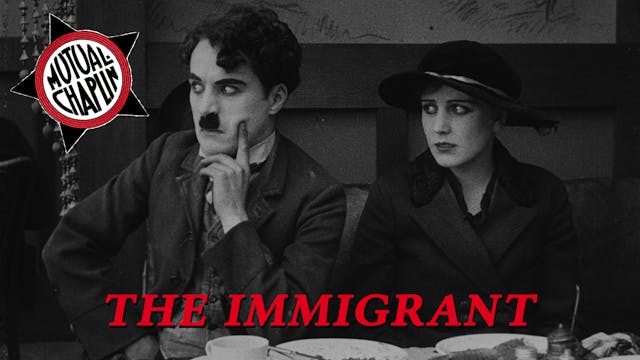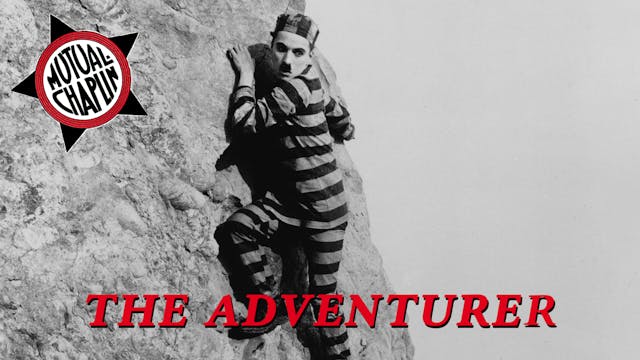Chaplin's Mutual Comedies (1916-1917)
In the movies he made for the Mutual Film Corporation, Charles Chaplin perfected what would become the trademark themes and techniques of his career while simultaneously creating the short films that many critics and enthusiasts now regard as his best work.
Flicker Alley and The Blackhawk Films® Collection are proud to commemorate The Little Tramp with CHAPLIN'S MUTUAL COMEDIES, a collection featuring 12 newly restored films (THE FLOORWALKER, THE FIREMAN, THE VAGABOND, ONE A.M., THE COUNT, THE PAWNSHOP, BEHIND THE SCREEN, THE RINK, EASY STREET, THE CURE, THE IMMIGRANT, and THE ADVENTURER), all scanned under the aegis of Association Chaplin at a resolution of 2,000 lines from original 35mm prints gathered from archives all over the world, then digitally assembled and restored, a collaborative effort of Lobster Films in Paris and L’Immagine Ritrovata in Bologna, Italy. Among the many well-known composers and musicians accompanying these films are Eric Beheim, Neil Brand, Timothy Brock, Antonio Coppola, Carl Davis, Stephen Horne, Robert Israel, the Mont Alto Motion Picture Orchestra, Maud Nelissen, Donald Sosin, and Gabriel Thibaudeau.
-
The Floorwalker (1916)
CHAPLIN'S MUTUAL COMEDIES #1
Embezzlement is the subject of THE FLOORWALKER, Chaplin's first film under his landmark contract with Lone Star-Mutual.
Though it lacks the pathos of many future Mutual comedies, THE FLOORWALKER contains a stronger plot than most of Chaplin's previous films, with t...
-
The Fireman (1916)
In Chaplin's second effort for Mutual, THE FIREMAN, he portrays an inept firefighter at Fire Station 23, surrounded by a plot filled with arson and insurance fraud. Filmed partly at an actual fire station (Fire Station 29, located at 158 South Western Avenue in Los Angeles), two condemned houses ...
-
The Vagabond (1916)
THE VAGABOND, Chaplin's third Mutual film, was an important step in Chaplin's career in which he interweaves pathos as an integral part of the comedy. In this way, THE VAGABOND is the prototype of The Kid (1921) and The Circus (1928). Chaplin employs the same romantic triangle seen in The Tramp (...
-
One A.M. (1916)
ONE A.M, Chaplin's fourth Mutual, is an impressive piece of virtuosity, a solo performance except for a brief appearance by Albert Austin as a taxi driver. The film is a tour de force of Chaplin's superb pantomime and comic creativity performed in a restricted space, a brilliant experiment that h...
-
The Count (1916)
The fifth film in the Mutual series, THE COUNT, further develops the situations of Caught in a Cabaret (1914) and A Jitney Elopement (1915) and anticipates the future Chaplin films The Rink (1916), The Idle Class (1921), and City Lights (1931), films in which Charlie impersonates a man of means i...
-
The Pawnshop (1916)
In the sixth Mutual film, Charlie is a pawnbroker's assistant in a pawnshop that evokes the London of Chaplin's childhood. The film is rich in comic transposition, a key element to Chaplin's genius. The apex of such work in the Mutuals is the celebrated scene in THE PAWNSHOP in which Charlie exam...
-
Behind the Screen (1916)
A refinement of his earlier comedies set in a film studio, BEHIND THE SCREEN, Chaplin's seventh film for Mutual, lampoons the unmotivated slapstick of the kind Chaplin disliked when he worked for Mack Sennett. Chaplin made the film as a sort of parody of the knockabout, pie-throwing comedy of the...
-
The Rink (1916)
Chaplin's eighth film for Mutual, THE RINK, is one of Chaplin's most popular comedies. Charlie is an inept waiter who prepares the bill of Mr. Stout by examining the soup, spaghetti, melon stains, and other remnants on the sloppy eater's shirt front, tie, and ear. Charlie employs an unorthodox ap...
-
Easy Street (1917)
For EASY STREET, his ninth film for Mutual and the most famous of the twelve, Chaplin ordered the first of the T-shaped street sets to be built that he would consistently utilize to provide a perfect backdrop to his comedy. The look and feel of Easy Street evoke the South London of his childhood ...
-
The Cure (1917)
THE CURE, the tenth film in the series, is perhaps the funniest of the Mutuals. Inspiration for the film was drawn from the Los Angeles Athletic Club, where Chaplin was living at the time and where the idea of a health spa first occurred to him. The wrestling bouts in the gymnasium of the Athleti...
-
The Immigrant (1917)
THE IMMIGRANT, which contains elements of satire, irony, and romance as well as cinematic poetry, endures into the twenty-first century as a comic masterpiece. The film, Chaplin's eleventh in the Mutual series, is the best-constructed of his two-reelers and was Chaplin's favorite among all his tw...
-
The Adventurer (1917)
The most popular of the Mutuals, THE ADVENTURER begins and ends with a chase. It is the fastest-paced film of the series, and although it has more slapstick than Easy Street (1917) and The Immigrant (1917), it is redeemed by its construction, characterization, and Chaplin's balletic grace.
Hi...
